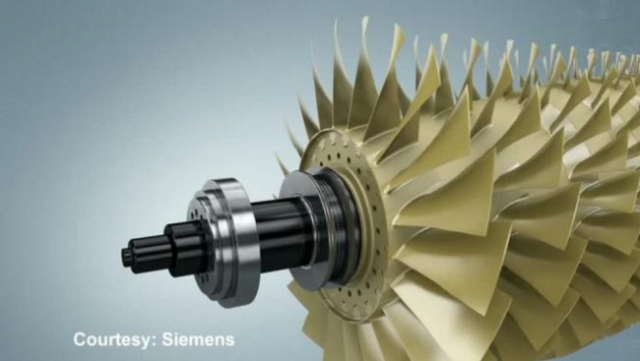Turbine blades built by metal-based 3D printing can withstand extreme pressure and heat from full load engine conditions at 13,000 RPM, according to Siemens, who called recent tests a “breakthrough”. Reuters’ Matthew Stock reports.
3D printed metal turbine blades able to withstand extreme pressure have been successfully tested by Siemens.
It opens the way to develop high pressure components for power generators and other industries, such as aeronautics. These blades can survive temperatures above 1,250 Celsius and pressures similar to the weight of a double-decker bus.
“To have this rotating part running is a breakthrough because it is submitted to these extreme loading… It rotates with 13,600 rotations-per-minute which means it is the most highly loaded component in the whole gas turbine. So this blade that weighs 180 grams will weigh 11 tonnes while rotating with this speed,” Jenny Nilsson, team leader for Additive Manufacturing at Siemens, saying.
Last year Siemens bought British-based Material Solutions, where the metal-based printing is being perfected.
A computer-aided design model is first sent to one of these machines. Precision lasers are then fired at a thin layer of metal powder.
“This is the nickel superalloy powder. This metallic powder is deposited in 20 micron layer thickness and then the laser melts the part,” Clotilde Ravoux, system engineer at Material Solutions, saying.
Ultra-thin layers are added one by one, building up the part. Testing is ongoing and Siemens can’t say when these blade will be commercially produced. But they say it reduces the design-to-testing time from years to months.
“When you apply casting procedures you will probably take one to one and a half years to provide you with these blades because of their long lead-time for tooling. And by applying additive manufacturing we could significantly shorten lead time by down to three months,” Christoph Haberland, Siemens Manufacturing Engineering, saying.
General Electric introduced its first 3D-printed aircraft engine component into service last July. While Boeing is using metal-based 3D printing to drastically cut the production costs of its 787 Dreamliner.










